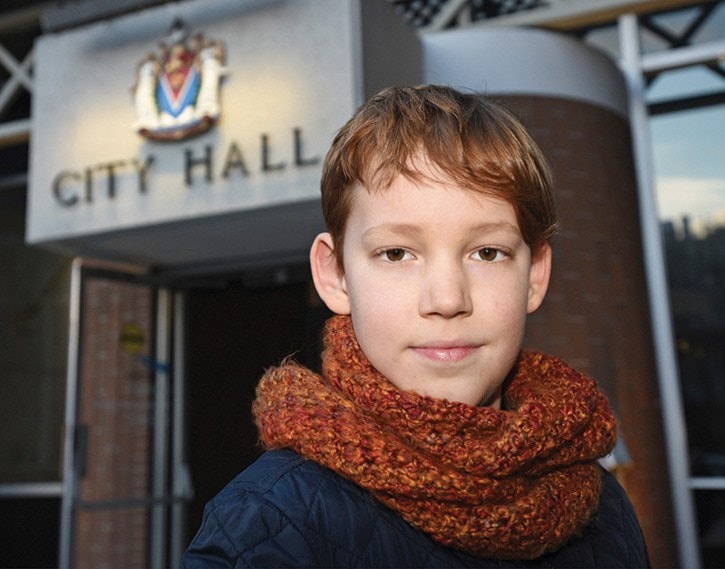Saanich could soon join Victoria in declaring the right to a healthy environment, a symbolic gesture gathering support from some municipalities across the country.
Coun. Susan Brice presented the motion to council last week modelled on the David Suzuki Foundation’s Blue Dot tour, a lobbying effort that encourages Canadians to request a right to a healthy environment. The long-term goal is to have the federal government enshrine environmental rights in the Canadian Charter of Rights and Freedoms.
Locally, the push came from Rupert Yakelashek, 10, who attended a Blue Dot tour event and then lobbied Victoria councillors on the matter during the municipal election campaign. “I was driving into town and listening to this young fellow Rupert on the radio, and I thought, ‘What a joy to listen to,’” Brice said.
After Victoria passed its motion, a councillor approached Brice and asked her if Saanich might attempt to do the same.
The declaration states multiple environmental human rights, such as the right to breathe clean air, the right to drink clean water, the right to consume safe food and the right to participate in decision-making that will affect the environment.
The declaration also states that the District of Saanich will take cost-effective measures to prevent the degradation of the environment and protect the health of its citizens.
“He [Suzuki] said that Canada had fallen behind in the environmental race and that many countries have environmental rights, but not Canada,” Yakelashek said. “If humans are harming the environment, we’re directly harming ourselves.”
Deborah Curran, an environmental law professor at the University of Victoria, said the declaration is positive as most municipalities fail to flex their full environmental muscles.
“Through Sec. 8 and 9 of the (B.C.) Community Charter, municipalities can enact bylaws for the protection of the environment: anti-pollution bylaws for watercourse protection, tree protection, air quality protection. There are very few municipalities who have done this to their full extent,” Curran said.
Curran pointed to Saanich’s Urban Containment Boundary, established in the 1960s, as a “rousing success” in environmental protection at the municipal level.
However, the boundary was put in place for very different concerns: the municipality didn’t want to extend sewer and water service beyond what could be fed by gravity, Curran said.
“Now, it has much broader sustainability purposes and it’s a good success story for maintaining vibrant urban areas and maintaining a vibrant urban agricultural economy,” she said.
Curran said a declaration of the right to a healthy environment can help “daylight” environmental policies across a municipality. “You’re forced to look at cumulative impacts and look at it in an integrated way around health and environment,” she said.
Brice is asking council for an agreement in principle and to forward the declaration to committee of the whole, where the public can have input. Residents would have a chance to weigh at a council meeting no earlier than Feb. 26.
“There was a day when it was a good thing to accommodate a person’s disabilities, and then it eventually became a right,” Brice said. “You have to ask at what point do some of these fundamental environmental components become something which we, as Canadians, should expect.”
editor@saanichnews.com
